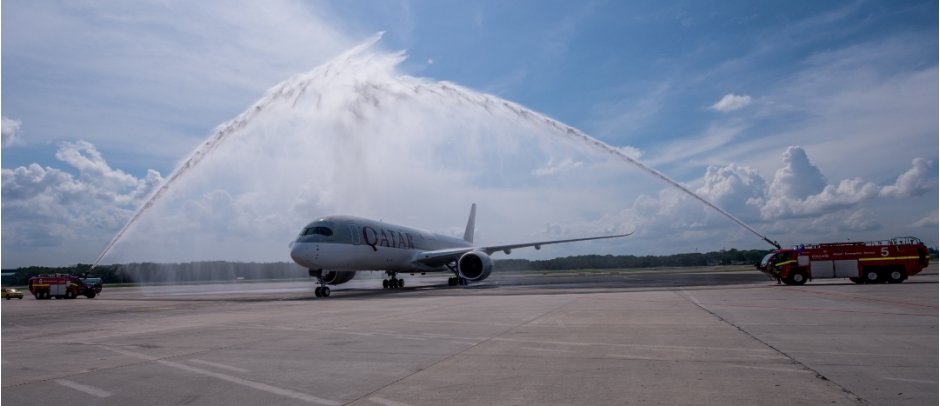Gulf carrier Qatar Airways has become the first airline in the world to replace its Boeing 787 Dreamliners with a more modern airliner in the form of the Airbus A350XWB as it debuts the European-built widebody in the Doha – Singapore market. The airline debuted the A350XWB on its route between Hamad International Airport and Changi International Airport on May 11, 2015 and plans to use the type on both its existing daily flights as well as on its new third daily rotation.
Qatar Airways had utilised the Boeing 777 on its two daily flights on the Doha – Singapore city pair since mid the second rotation was introduced in mid-2011, but in March last year the 787-8 was introduced into this market and since August 2014 has been serving the route exclusively. Rather strangely for a modern aircraft type, Qatar Airways now says “the aircraft will be progressively replaced by the next-generation A350 XWB”.
The airline will also will add an additional daily flight to Singapore, as part of its global expansion drive and to cater to the increase in passenger demand. All three daily flights will be operated using the A350 XWB by mid-August, it confirms.

“The A350 XWB is the third and final major new aircraft in a decade and Qatar Airways is delighted to be the first global airline to fly this state-of-the-art aircraft into Singapore and Asia Pacific,” said Marwan Koleilat, chief commercial officer, Qatar Airways.
“Singapore is a key market for Qatar Airways and we remain committed to offering our Singapore-based passengers the best in-flight experience possible. With the A350XWB, all 283 passengers can be assured of unprecedented levels of comfort across all classes when travelling to Doha and onwards to key destinations in Europe and the Americas,” he added.
Qatar Airways is the launch customer for the A350XWB, and currently remains the only airline to fly the world’s newest widebody aircraft. Following its introduction to service to Frankfurt in Germany, Singapore is only the second route for the type which is configured in a two-class arrangement seating 26 passengers in Business Class and 247 in Economy.





